Self-service screening is coming to airport checkpoints, thanks to the Science and Technology Directorate’s Screening at Speed Program. A pilot of a new self-service screening system is scheduled to begin in January at Harry Reid International Airport in Las Vegas, Nevada.
As the number of air travelers continue to rise and exceed pre-pandemic levels, the Science and Technology Directorate (S&T) is creating sustainable changes to systems and processes to increase screening efficiency and improve the passenger experience while keeping a stable number of Transportation Security Officers (TSOs). One solution S&T is pursuing through its Screening at Speed Program is passenger self-service screening, which allows PreCheck® passengers to complete the screening process with minimal to no assistance from TSOs.

“Like self-ordering kiosks at fast food and sit-down restaurants, self-service screening allows passengers in the Trusted Traveler Program to complete the security screening process on their own,” said Screening at Speed Program Manager Dr. John Fortune. “Travelers will use passenger and carry-on screening systems at individual consoles or screening lanes themselves, reducing the number of pat downs and bag inspections TSOs need to perform and freeing their time to be reallocated to the busier aspects of screening operations. The feedback we’ve already received during testing from both mock passengers and TSOs has been incredibly positive.”
S&T and TSA are actively investing in the future of air travel
S&T’s Screening at Speed team and its Transportation Security Laboratory (TSL) have partnered with the Transportation Security Administration (TSA) Innovation Task Force (ITF) to develop and test solutions to build the foundation for the next generation of airport screening.
The joint effort is focused on transformative research and development to increase security effectiveness and reduce checkpoint wait times, benefiting both passengers and TSOs,” Dr. Fortune said. “The passenger self-service screening technology aims to keep travelers and TSOs safer by minimizing person to person contact, reducing the number of bags TSOs have to pick up and move around and allowing passengers to proceed at their own pace.
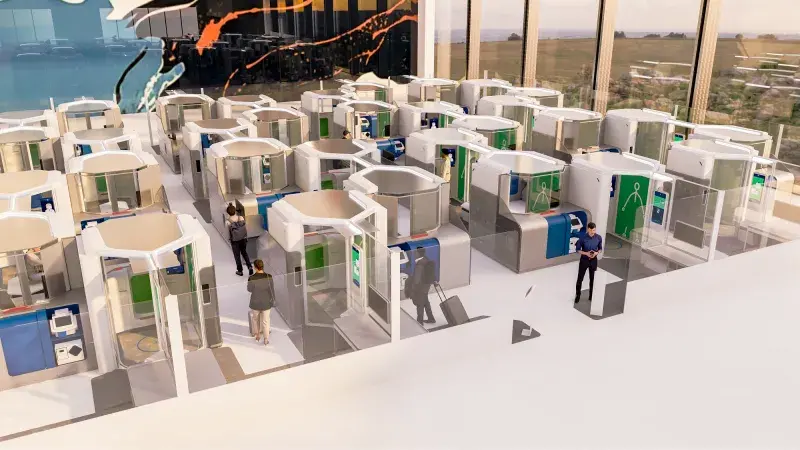
In 2021, Screening at Speed created a Broad Agency Announcement with TSA for an airport self-service screening concept design and prototype, initially intended for PreCheck® passengers. S&T challenged industry to propose innovative concepts for what a self-service screening solution might look like.
In late 2021, S&T awarded four contracts to three companies: Micro-X of Federal Way, Washington; Vanderlande Industries Inc. of Marietta, Georgia; and Voxel Radar of San Francisco. The companies are working with Screening at Speed and TSA to develop self-screening concepts, prototypes, and hardware that enable new screening paradigms while meeting TSA’s rigorous security standards.
Micro-X is developing a pod-based design for passengers to use individual screening consoles consisting of a compact carry-on screening system and a flat panel passenger screening capability. The system provides feedback to the passenger if additional screening is needed. A second Micro-X effort includes developing a small Computed Tomography (CT) X-ray system for a compact carry-on and personal item self-screening solution.
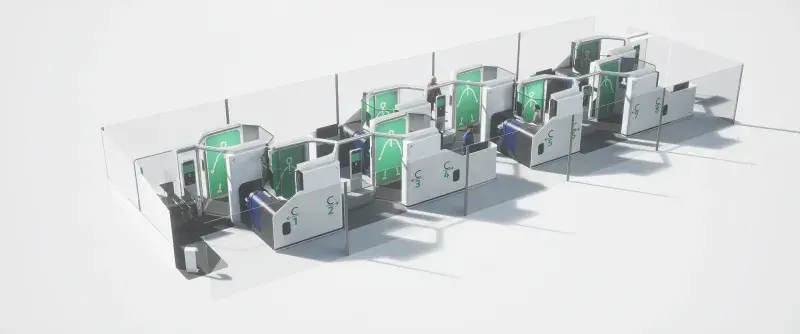
Voxel Radar is developing in-motion panel sensors to line walls or curved surfaces, so passengers are screened in near real-time while removing belongings, or, possibly in the future, as they walk through a checkpoint.
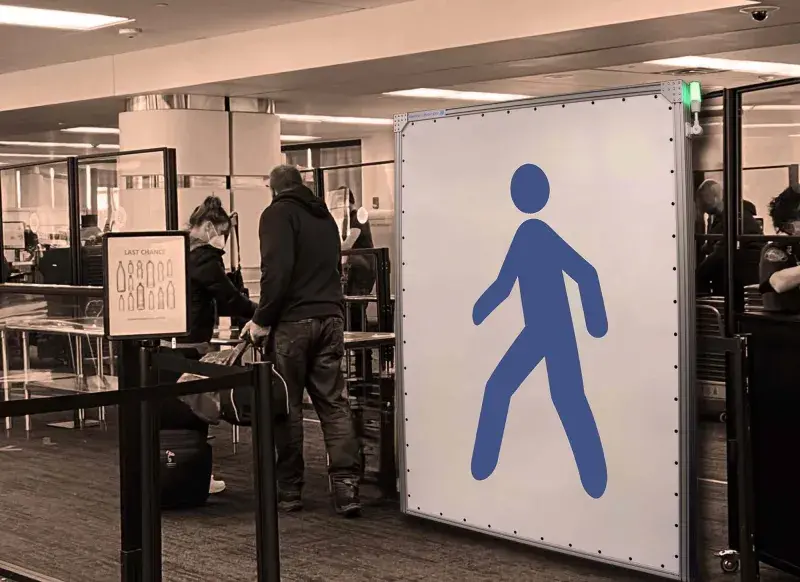
Vanderlande’s prototype, the PAX MX2, combines the company’s Automated Screening Lane carry-on bag conveyance system with new and existing Transportation Security Equipment to create four integrated stations for one checkpoint lane. Each station includes a video monitor with multi-step instructions and a help button that connects to a live TSO for assistance as needed. This prototype also includes a screening portal with automated entry and exit doors. If a passenger doesn’t pass initial screening due to an item left in their pocket or similar issue, the entry door reopens so passengers can remove items before being re-screened in the passenger portal. After travelers successfully pass screening, the automatic exit door will open and usher them out to gather their personal belongings and head to their flights.
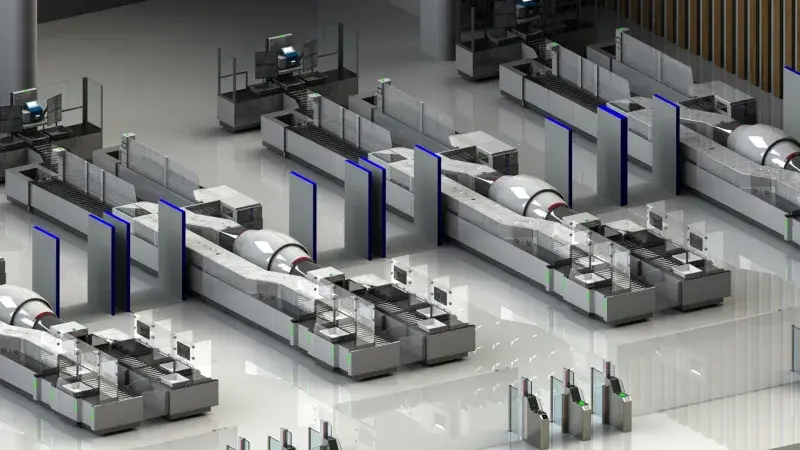
“We are very excited to see how far these capabilities have come in a relatively short amount of time,” said Christina Peach, Branch Manager for the TSA ITF. “The airport security experience that we’ve all come to know could soon look and feel a lot different—in a very good way—for both passengers and TSOs.”
Demonstrating and testing the capabilities
In March 2023, the Vanderlande prototype was installed at the TSA Transportation Systems Integration Facility (TSIF) at Ronald Reagan Washington National Airport in Washington, D.C. TSA evaluated how well the system performs under simulated real-world conditions, to include screening volunteer passengers and their belongings.
In April, TSA Administrator David Pekoske visited the system to provide his own feedback. “Since the system is designed for use in PreCheck® lanes, highlighting the benefits to PreCheck® travelers should be a priority. We want them to understand the value we’re trying to bring to them for taking the time to be pre-cleared for travel,” said Administrator Pekoske.
In June, S&T Under Secretary Dr. Dimitri Kusnezov also visited the Vanderlande prototype. “S&T is pushing the envelope to develop new technologies and concepts to enable the airport of the future,” he said. “Self-service screening is a step toward building that future.”

In August, Voxel Radar sent its in-motion advanced imaging technology passenger panel sensors to TSL, where S&T staff collected mock passenger scans to understand the system’s full capabilities. Going forward, the sensors could be integrated into the Micro-X prototype or explored as an independent screening technology. The data collected will also inform preliminary algorithm development.
In December, Micro-X will begin a multi-month demonstration and data collection of its small-size CT X-ray system at TSL in Atlantic City, New Jersey. Test engineers will collect screening images to validate the system’s performance and to assist with future algorithm development.
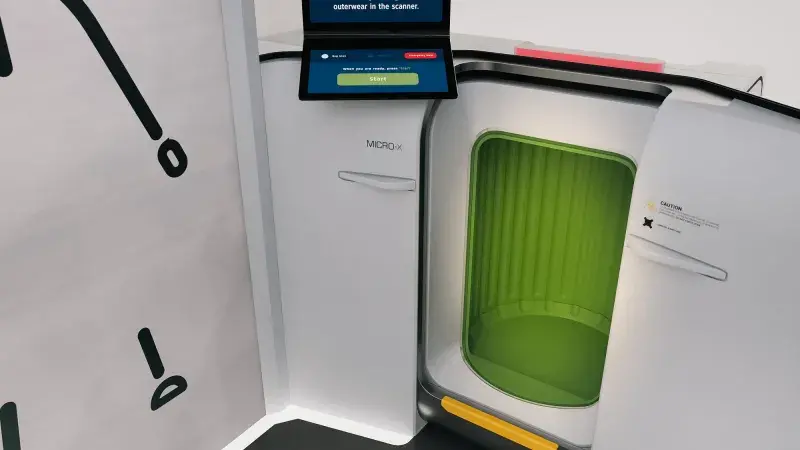
Screening at Speed is also funding video analytics companies Lauretta AI, LLC and Deep North through the S&T Silicon Valley Innovation Program to prompt passengers through each screening step to ensure they hold the proper pose, empty pockets, and confirm they have successfully been screened.
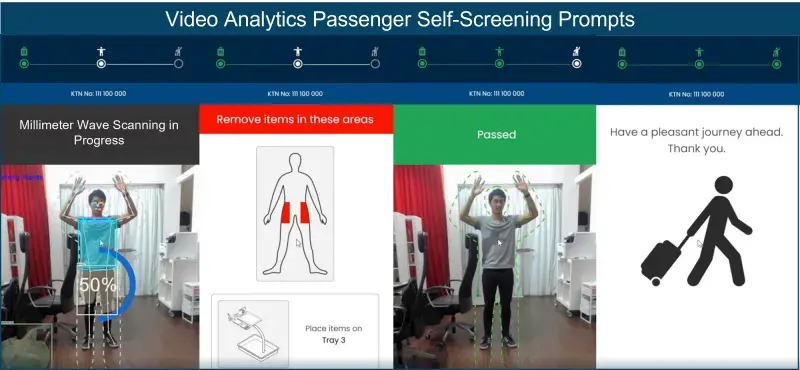
What’s next for passenger self-service screening?
In January, PreCheck® travelers will get their first chance to use the Vanderlande self-service screening prototype at Harry Reid International Airport in Las Vegas, Nevada. TSOs from the airport have already been trained at the TSIF on how to operate the system and help travelers navigate the self-service screening process.
S&T and TSA will also be giving the public a virtual reality walkthrough of the Micro-X self-screening system at their booths at the Consumer Electronics Show also in Las Vegas in January.
Micro-X has already begun building the first self-service screening pod, which is scheduled to be tested in 2025. The goal is to integrate multiple pods into one full screening lane to accommodate multiple travelers simultaneously.
“We’re privileged to partner with TSA to reimagine airport security by building new ground-breaking technology and solutions while being passenger focused and forward leaning,” said Dr. Fortune. “Self-service screening is a big step toward creating novel, innovative solutions to build the airport of the future. The team expects to receive passenger and TSO feedback on the first self-service prototype once it is piloted in Las Vegas.”
An earlier version of this feature article was published in the August/September edition of Airport Magazine. The article was updated to reflect program progress. For additional information or related media inquiries, contact stmedia@hq.dhs.gov.
